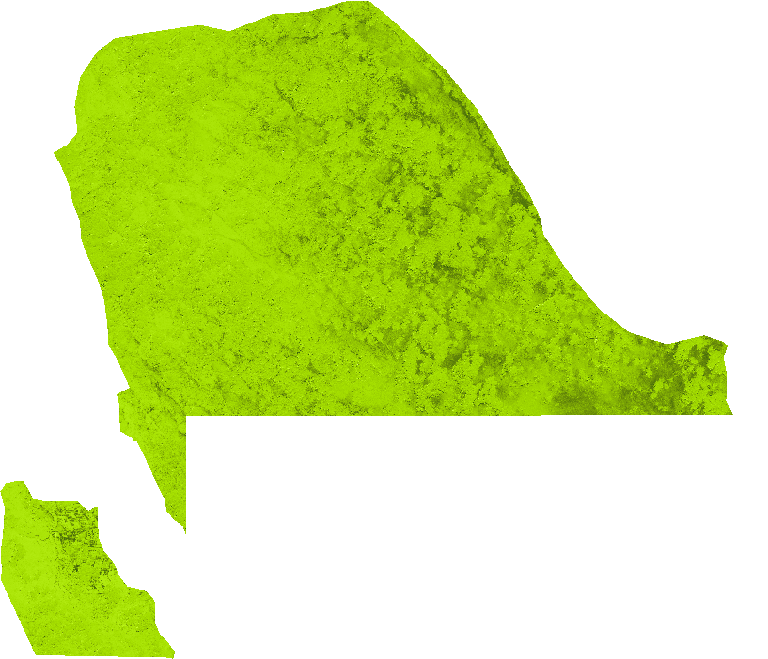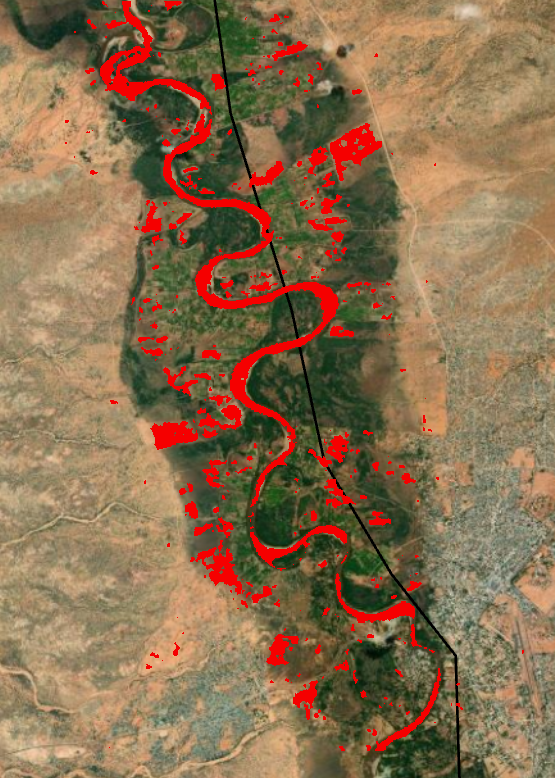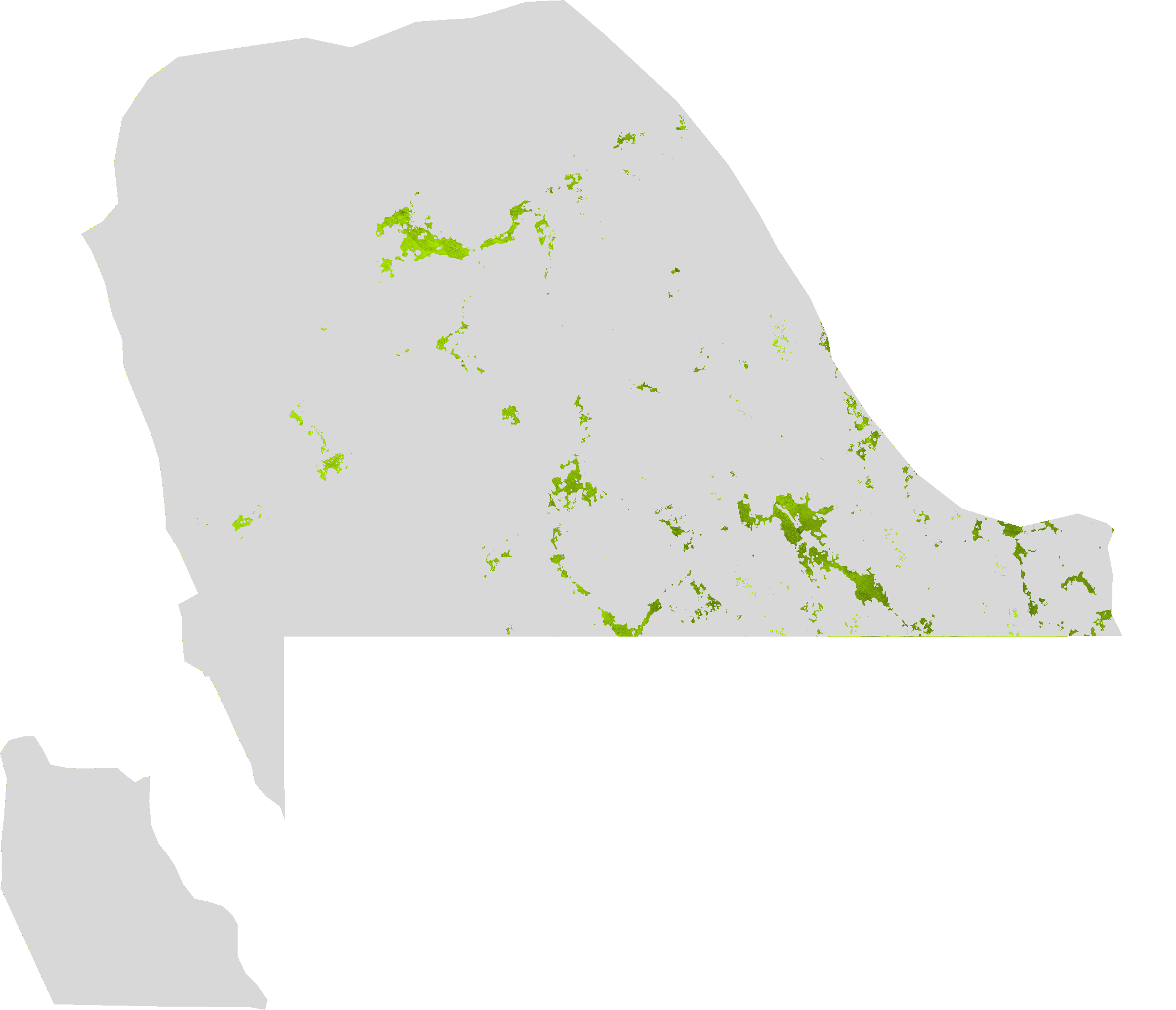Keyword
Garissa
106 record(s)
Type of resources
Available actions
Topics
Keywords
Contact for the resource
Provided by
Years
Formats
Representation types
Update frequencies
Status
Scale
-

Arvi: Atmospherically Resistant Vegetation Index: This index takes advantage of the different scattering responses from the blue and red band to retrieve information regarding the atmosphere opacity. The Atmospherically Resistant Vegetation Index algorithm was introduced by Kaufman and Tanre (1992). The resistance of the ARVI to atmospheric effects (in comparison to the NDVI) is accomplished by a self-correction process for the atmospheric effect on the red channel. This is done using the difference in the radiance between the blue and the red channels to correct the radiance in the red channel. Compared to the red band, the blue band is much more easily scattered by the atmosphere particles. This explains why the sky is usually perceived as being blue. Thus, the ARVI index takes advantage of the different scattering responses from the blue and red band to retrieve information regarding the atmosphere opacity. Simulations using radiative transfer computations on arithmetic and natural surface spectra, for various atmospheric conditions, show that ARVI has a similar dynamic range to the NDVI, but is, on average, four times less sensitive to atmospheric effects than the NDVI. The ARVI results from the following equation:ARVI = (IR_factor * near_IR - rb) / (IR_factor * near_IR + rb), where: rb = (red_factor * red) - gamma * (blue_factor * blue - red_factor * red), with gamma = 1 The main reason why the blue band is more susceptible to atmospheric scattering than the red band is because its wavelength is shorter. Generally, the shorter wavelength has stronger scattering. It's very similar to the way sea waves behave over oceans. When a large wave strikes an object, such as a ferryboat, it is more capable of continuing on its path by going around the object. On the other hand, it is dispersed more easily when the waves are smaller in size. Consequently, by obtaining the difference between the reflectance of the highly sensitive blue band and the less sensitive red band (blue - red), it serves like an indicator of what the atmospheric conditions were like. Here gamma serves as a weighting function for the difference reflectance of the two bands. Various values can be chosen for it, which mainly depends on the type of aerosol size. According to Kaufaman and Tanre's statement in 1992, it is best to select a gamma value of 1 when information on the aerosol type is not available. Consequently, the main purpose of the above rb equation is to decrease the influence brought forth from the atmosphere, where a more accurate assessment of the value of the red reflectance can be obtained.
-

SAR Specular Reflection extracted from Sentinel-1 imagery, applied for Flood monitoring
-

Atmospherically Resistant Vegetation Index: This index takes advantage of the different scattering responses from the blue and red band to retrieve information regarding the atmosphere opacity. The Atmospherically Resistant Vegetation Index algorithm was introduced by Kaufman and Tanre (1992). The resistance of the ARVI to atmospheric effects (in comparison to the NDVI) is accomplished by a self-correction process for the atmospheric effect on the red channel. This is done using the difference in the radiance between the blue and the red channels to correct the radiance in the red channel. Compared to the red band the blue band is much more easily scattered by the atmosphere particles. This explains why the sky is usually perceived as being blue. Thus the ARVI index takes advantage of the different scattering responses from the blue and red band to retrieve information regarding the atmosphere opacity. Simulations using radiative transfer computations on arithmetic and natural surface spectra for various atmospheric conditions show that ARVI has a similar dynamic range to the NDVI but is on average four times less sensitive to atmospheric effects than the NDVI. The ARVI results from the following equation:ARVI = (IR_factor * near_IR - rb) / (IR_factor * near_IR + rb) where: rb = (red_factor * red) - gamma * (blue_factor * blue - red_factor * red) with gamma = 1. The main reason why the blue band is more susceptible to atmospheric scattering than the red band is because its wavelength is shorter. Generally the shorter wavelength has stronger scattering. It's very similar to the way sea waves behave over oceans. When a large wave strikes an object such as a ferryboat it is more capable of continuing on its path by going around the object. On the other hand it is dispersed more easily when the waves are smaller in size. Consequently by obtaining the difference between the reflectance of the highly sensitive blue band and the less sensitive red band (blue - red) it serves like an indicator of what the atmospheric conditions were like. Here gamma serves as a weighting function for the difference reflectance of the two bands. Various values can be chosen for it which mainly depends on the type of aerosol size. According to Kaufaman and Tanre's statement in 1992 it is best to select a gamma value of 1 when information on the aerosol type is not available. Consequently the main purpose of the above rb equation is to decrease the influence brought forth from the atmosphere where a more accurate assessment of the value of the red reflectance can be obtained.
-

The Normalized Difference Water Index algorithm was developed by Gao (19964) being a measure of liquid water molecules in vegetation canopies that interacted with the incoming solar radiation. NDWI is sensitive to changes in liquid water content of vegetation canopies. It is less sensitive to atmospheric effects than NDVI. NDWI does not remove completely the background soil reflectance effects therefore it should be considered as an independent vegetation index. It is complementary to not a substitute for NDVI. The NDWI results from the following equation: NDWI = (IR_factor * near_IR - mir_factor * middle_IR) / (IR_factor * near_IR + mir_factor * middle_IR)
-

MCARI gives a measure of the depth of chlorophyll absorption and is very sensitive to variations in chlorophyll concentrations as well as variations in Leaf Area Index (LAI). MCARI values are not affected by illumination conditions the background reflectance from soil and other non-photosynthetic materials observed.
-

Colour Index: The Colour Index algorithm was developed to differentiate soils in the field. Low valued CIs have been shown to be correlated with the presence of a high concentration of carbonates or sulfates and higher values to be correlated with crusted soils and sands in arid regions (Escadfal 1989). In most cases the CI gives complementary information with the BI and the NDVI. Used for diachronic analyses they help for a better understanding of the evolution of soil surfaces. The CI results from the following equation: CI = (red_factor * red - green_factor * green) / (red_factor * red + green_factor * green)
-

Difference Vegetation Index: This index is sensitive to the amount of vegetation. The Difference Vegetation Index algorithm is sensitive to the amount of vegetation. This is the simplest vegetation index: - Sensitive to the amount of vegetation - Distinguishes between soil and vegetation - Does NOT deal with the difference between reflectance and radiance caused by the atmosphere or shadows. The DVI results from the following equation: DVI = (IR_factor * near_IR - red_factor * red). In the area of red the incoming solar radiation won't be extensively absorbed by the pigments of the mesophyll inside the folios primarily by the chlorophyll. In the area of the near infrared in contrast the bigger part of the incoming radiation was reflected.
-

Difference Vegetation Index: This index is sensitive to the amount of vegetation. The Difference Vegetation Index algorithm is sensitive to the amount of vegetation. This is the simplest vegetation index: - Sensitive to the amount of vegetation - Distinguishes between soil and vegetation - Does NOT deal with the difference between reflectance and radiance caused by the atmosphere or shadows. The DVI results from the following equation: DVI = (IR_factor * near_IR - red_factor * red). In the area of red the incoming solar radiation won't be extensively absorbed by the pigments of the mesophyll inside the folios primarily by the chlorophyll. In the area of the near infrared in contrast the bigger part of the incoming radiation was reflected.
-

Chlorophyll content in the leaf: corresponds to the content of chlorophyll a chlorophyll b and carotenoids per unit of leaf area.
-

Canopy water content (CWC) the amount of water stored in the vegetation canopy is typically determined by multiplying the leaf water content by the canopy leaf area index (LAI). This calculation incorporates information about the leaf water condition and the canopy structure [1]. CWC is a critical parameter for assessing vegetation growth and monitoring drought stress. It is influenced by soil water supply and atmospheric demand.
